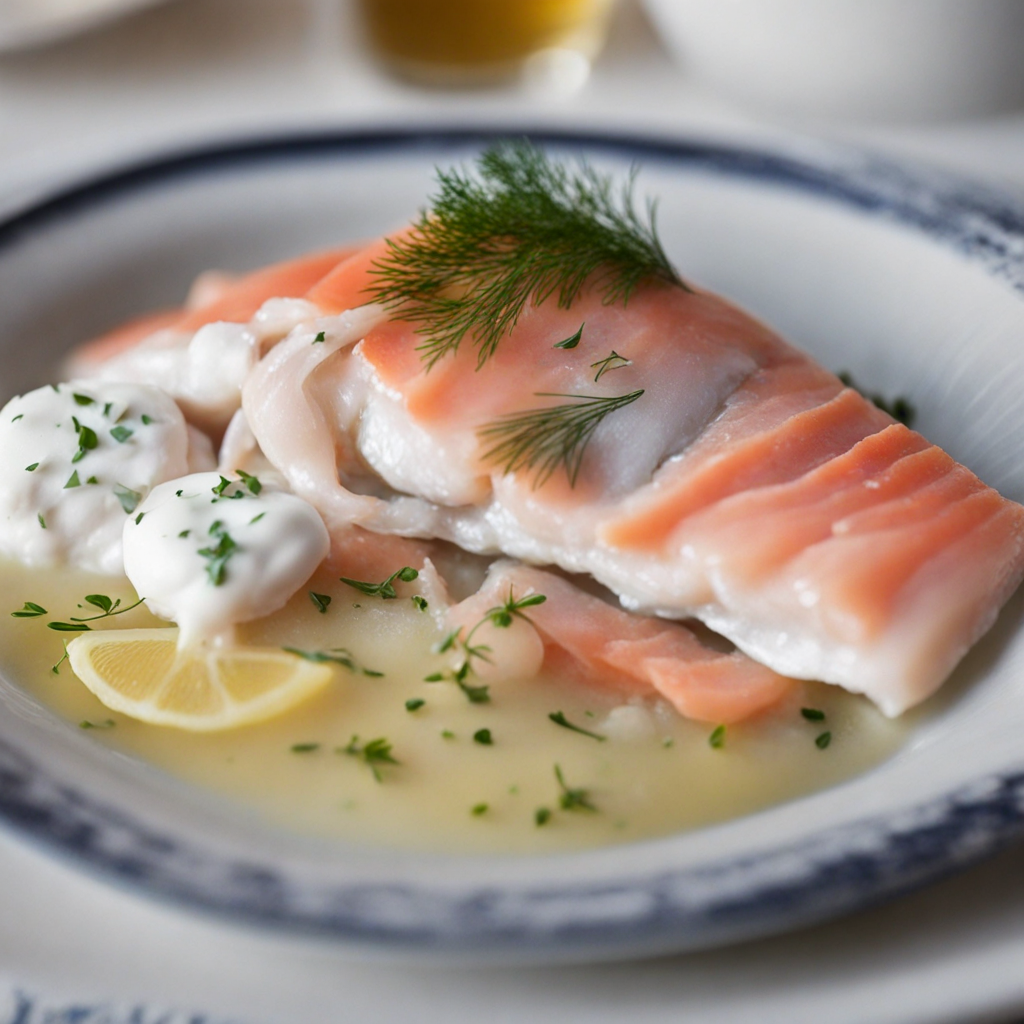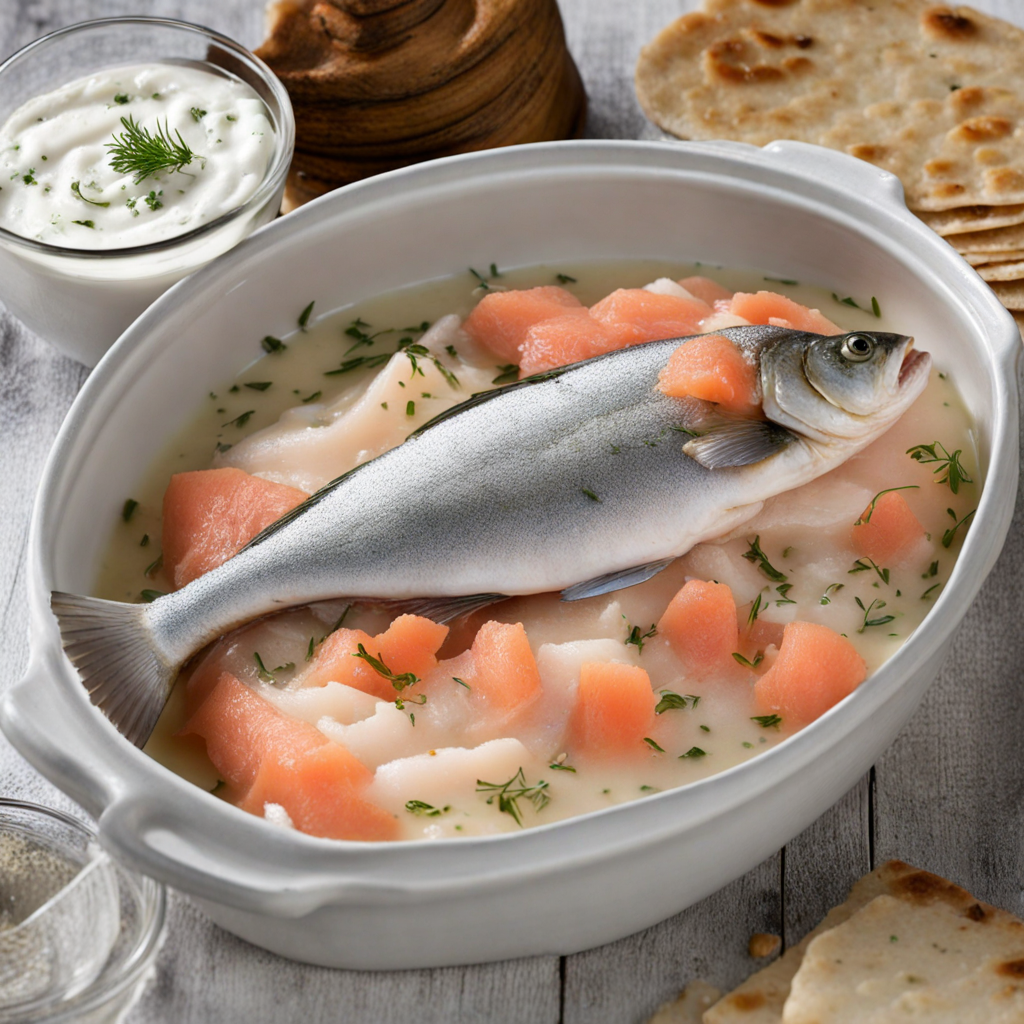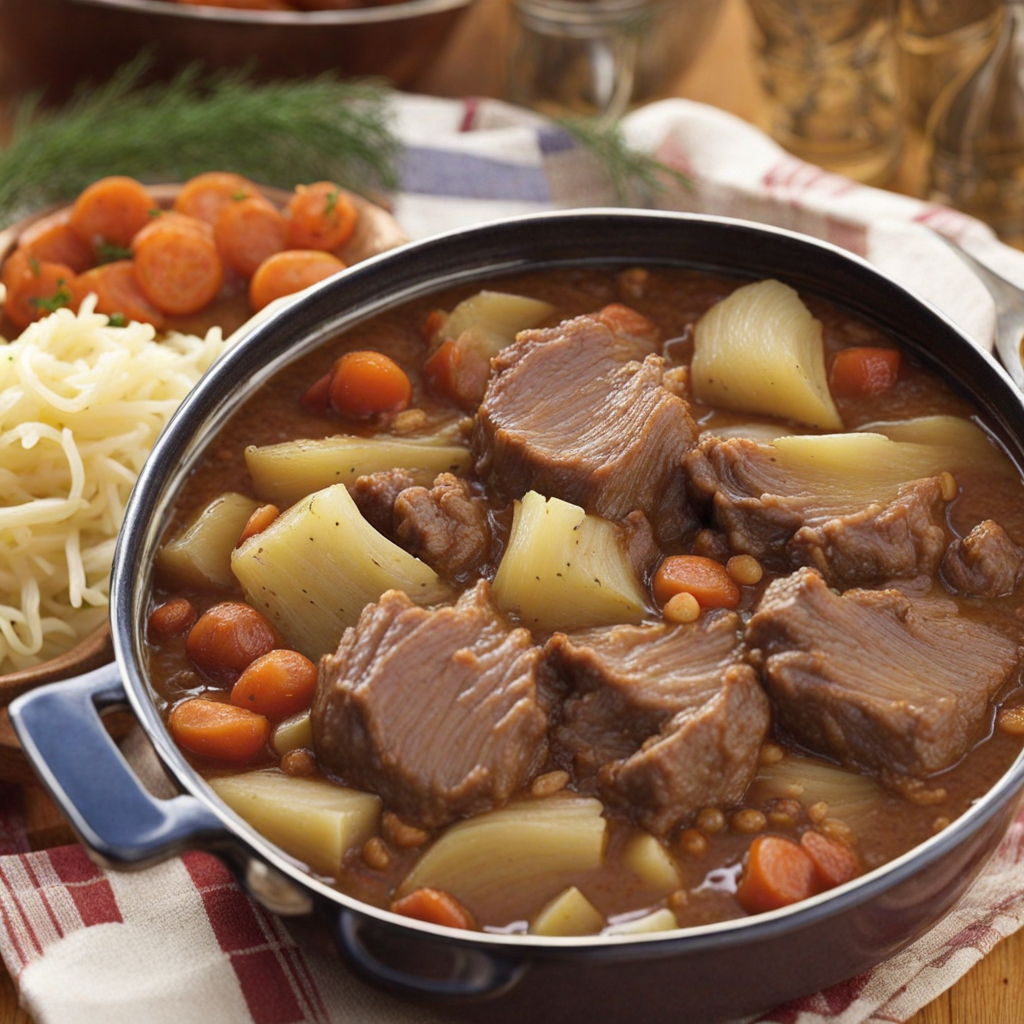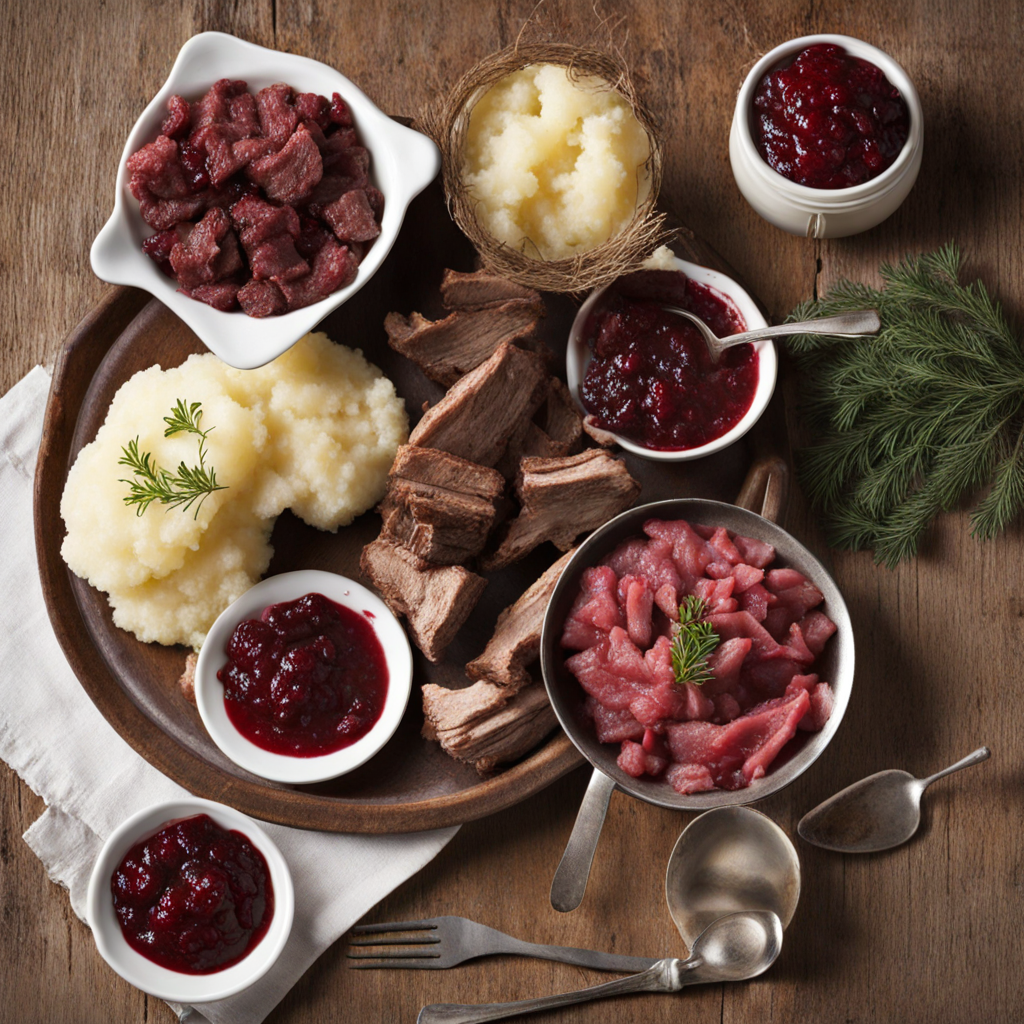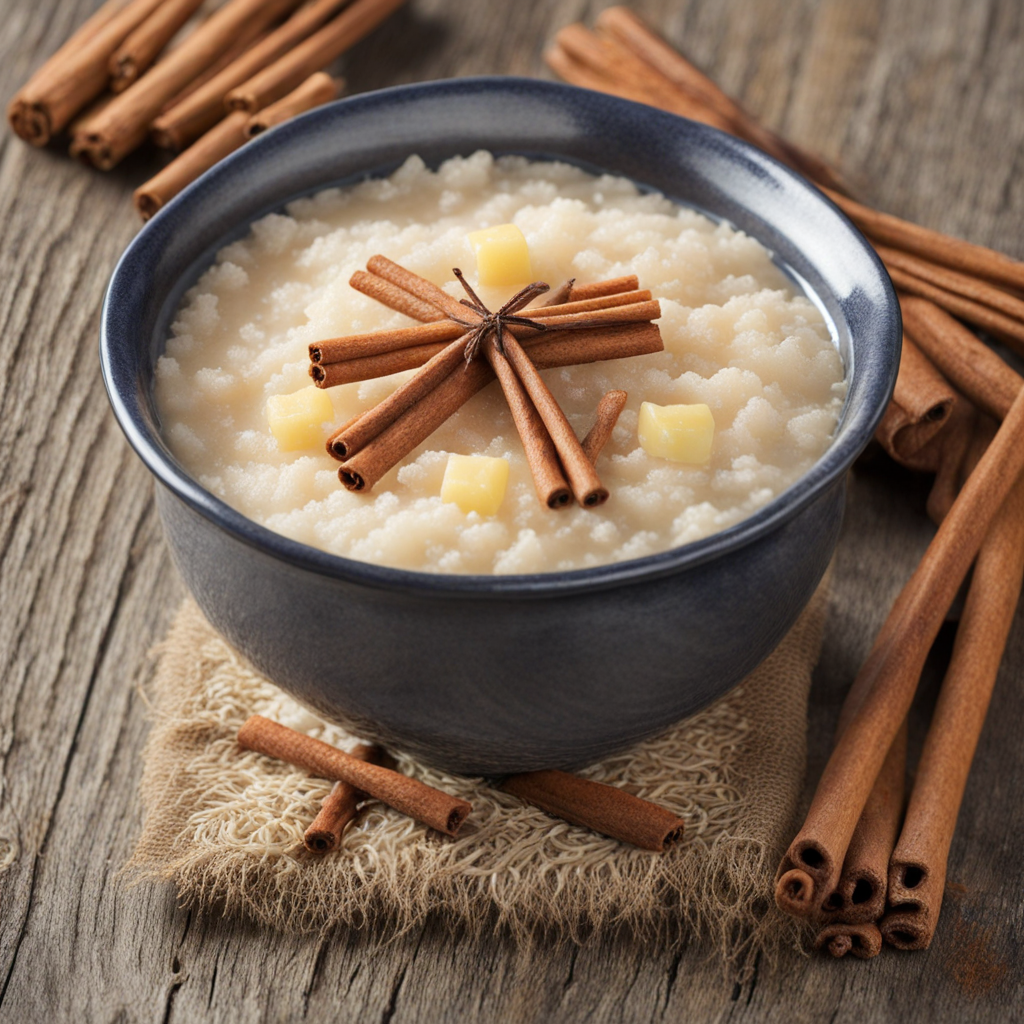Rakfisk
Rakfisk is a traditional Norwegian dish that embodies the essence of preserving fish through fermentation, offering a unique taste experience that is both savory and slightly tangy. Typically made from trout or char, the fish is cleaned, salted, and then placed in a container to ferment for several months, usually from late summer to winter. This careful process results in a delicacy that has a soft, silky texture, with flavors that develop complexity over time. The mild sweetness of the fish is complemented by a rich umami profile, making every bite a memorable exploration of taste. When served, rakfisk is often accompanied by a variety of traditional sides that enhance its flavor. Common accompaniments include flatbread, sour cream, onions, and boiled potatoes, which add creaminess and crunch to the dish. The flatbread serves as a perfect vessel for scooping up the fish, while the sour cream provides a refreshing contrast to the salty, fermented notes. This combination creates a delightful balance that showcases the dish's rustic origins and the Norwegian affinity for simple yet robust flavors. Rakfisk is not just food; it is a cultural experience that invites diners to engage with the rich culinary heritage of Norway. Often enjoyed during special occasions and festive gatherings, it embodies the spirit of community and tradition. As you indulge in this unique dish, you are not only savoring the flavors of the fish itself but also embracing the age-old methods of preservation that have been passed down through generations. For those adventurous enough to try it, rakfisk offers an unforgettable journey into Norway's gastronomic landscape.
How It Became This Dish
The History of Rakfisk: Norway’s Fermented Fish Delight #### Origins of Rakfisk Rakfisk, a traditional Norwegian dish, is an intriguing amalgamation of history, culture, and culinary innovation. The origins of rakfisk can be traced back to the Viking Age, around 800-1100 AD, when Norse seafarers relied on preservation techniques to sustain themselves during long voyages. The harsh climate of Norway, with its cold winters and limited access to fresh food, necessitated the development of various preservation methods, including salting, drying, and fermenting. The term "rakfisk" itself derives from the Old Norse words "raka," meaning to ripen or ferment, and "fisk," meaning fish. Traditionally, rakfisk is made from trout or char, which is salted and then stored in wooden barrels for several months to ferment. This process not only preserves the fish but also transforms its flavor, creating a unique taste profile that is distinctly Norwegian. #### Cultural Significance Rakfisk is more than just a dish; it embodies the spirit of Norwegian heritage and the importance of local food traditions. Historically, it was a staple among rural communities, particularly in the Valdres district of Oppland, where the cold climate and abundance of freshwater lakes made it an ideal environment for fishing and fermentation. Rakfisk was commonly consumed during festivals, family gatherings, and special occasions, signifying both sustenance and celebration. As an integral part of Norwegian culture, rakfisk has been featured in folklore and local customs. It is often associated with the harvest season, a time when communities come together to prepare and enjoy traditional foods. The dish is typically served with accompaniments such as flatbread, sour cream, onions, and potatoes, further enhancing its communal nature. Sharing rakfisk fosters a sense of togetherness and connection to the land and its resources. #### Development Over Time The evolution of rakfisk reflects broader changes in Norwegian society and culinary practices. While the traditional methods of fermentation have remained largely unchanged, the dish has witnessed a resurgence in popularity in recent years, driven by a growing interest in artisanal and locally sourced foods. This revival has been supported by the establishment of rakfisk festivals, where producers showcase their craft and enthusiasts gather to celebrate this unique delicacy. One of the most notable events is the Rakfisk Festival held annually in Fagernes, which attracts thousands of visitors. Here, local producers present their rakfisk, often competing for the title of best rakfisk, judged by a panel of experts and enthusiasts. This festival not only highlights the culinary significance of rakfisk but also serves to educate the public about the traditional methods of preparation and the importance of sustainable fishing practices. In contemporary Norway, rakfisk has also found its way into modern cuisine, with chefs experimenting with the dish in innovative ways. While traditionalists may argue that rakfisk should be enjoyed in its purest form, contemporary interpretations often incorporate flavors and techniques from international cuisines, showcasing the versatility of this beloved dish. This fusion reflects a broader trend in Nordic cuisine, where traditional foods are reimagined to appeal to a global audience. #### Health and Sustainability Beyond its rich cultural history, rakfisk is also viewed through the lens of health and sustainability. Norway's cold waters are home to some of the world's healthiest fish, rich in omega-3 fatty acids and essential nutrients. The fermentation process not only preserves the fish but also enhances its nutritional profile, making rakfisk a healthful option when consumed in moderation. Moreover, the emphasis on local sourcing and traditional preparation methods aligns with the growing global movement towards sustainability in food production. Many rakfisk producers prioritize ethical fishing practices, ensuring that their methods do not harm the delicate ecosystems of Norway's waterways. This commitment to sustainability resonates with consumers who are increasingly mindful of the origins of their food. #### Rakfisk in Modern Times Today, rakfisk is enjoyed by both locals and tourists, serving as a culinary ambassador for Norwegian culture. While it was once considered a dish for the adventurous eater, it has gained a reputation as a gourmet delicacy. As more people travel to Norway and experience its diverse culinary landscape, rakfisk has become a must-try item on menus across the country. The dish has also crossed borders, gaining attention in the international food scene. As chefs and food enthusiasts explore traditional ingredients from around the world, rakfisk has found its place in gourmet restaurants and pop-up eateries, showcasing its versatility and depth of flavor. Whether served as part of a traditional Norwegian meal or presented in a modern tasting menu, rakfisk continues to intrigue and delight those willing to embrace its unique characteristics. #### Conclusion Rakfisk is a remarkable example of how food can encapsulate history, culture, and identity. From its ancient origins as a preservation method to its contemporary status as a celebrated delicacy, rakfisk tells the story of Norway's relationship with its natural environment and culinary heritage. It serves as a reminder of the importance of tradition in the face of modernity, encouraging both locals and visitors to appreciate the flavors of the past while embracing the innovations of the present. As Norway continues to navigate the complexities of globalization and culinary exploration, rakfisk stands as a testament to the enduring power of local food traditions. By preserving the methods and values that have defined this dish for centuries, Norwegians ensure that rakfisk remains a cherished part of their cultural identity for generations to come. Whether enjoyed in a rustic cabin by a fjord or in a chic urban restaurant, rakfisk invites all to partake in the rich tapestry of Norwegian history and cuisine.
You may like
Discover local flavors from Norway


